Plan your Chengdu tour? As the provincial capital and largest city of Sichuan, Chengdu is located on the edge of the fertile plains of the Red Basin in China’s Sichuan Province.
Its long and splendid history has left Chengdu countless historical and cultural sites and some of them are definitely worth visiting.
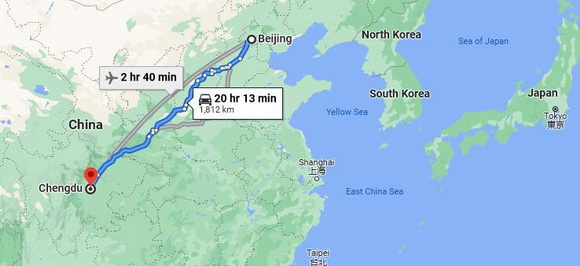
Also, your trip to Chengdu is not fully complete without a pleasant side trip to the Panda Research Base. And plenty of interesting attractions await your exploration.
We’ve rounded up a list of the top 10 attractions in Chengdu, which can be helpful for your planning your short trip to Chengdu.
No. 01 Chengdu Research Base of Giant Panda Breeding
The Giant Panda Breeding Research Base is located on the mountain of Futoushan in the northern suburbs of Chengdu. It has been created and imitated the pandas’ natural habitat in order that they might have the best possible environment for rearing and breeding.
Check out the link Chengdu Research Base of Giant Panda Breeding for more photos.
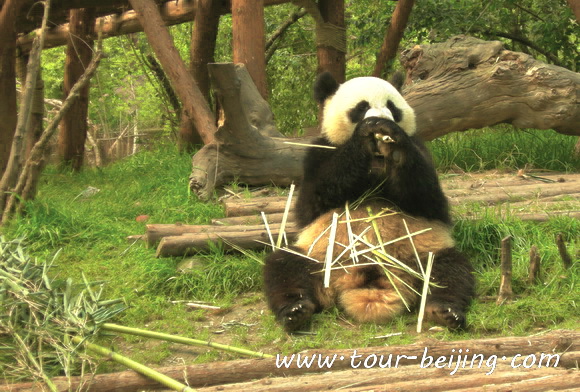
The Research Base shows many practical specimens of the Giant Panda, including fossils, dissected anatomical remains, diet specimens, etc. Additionally there is a Giant Panda Museum together with research laboratories and a training center.
Entrance Fee: CNY 55
Opening Hours: Opening time: 07:30 – 18: 00 throughout the year
Ticket sales and checking time: 07:30 – 17:00 all the year round
How to get there: First take a bus to Chengdu Zoo Bus Station, then transfer to Bus 198 / 198A, and get off at Panda Base Bus Station. It takes about 1 hour and 30 minutes.
Address: 1375 Panda Road, Northern Suburb, Chengdu Sichuan, China
No. 02: Dujiangyan Irrigation Project
Dujiangyan is an ancient irrigation infra-structure built in 256 BC during the Warring States Period of China by the Kingdom of Qin. It is located in the Min River in Sichuan.
Dujiangyan Irrigation Project is still in use today to irrigate over 5,300 square kilometers of land in the region. The project consists of three important parts, namely Yuzui, Feishayan and Baopingkou scientifically designed to automatically control the water flow of the rivers from the mountains to the plains throughout the year.
Check out Dujiangyan Trip for more information.
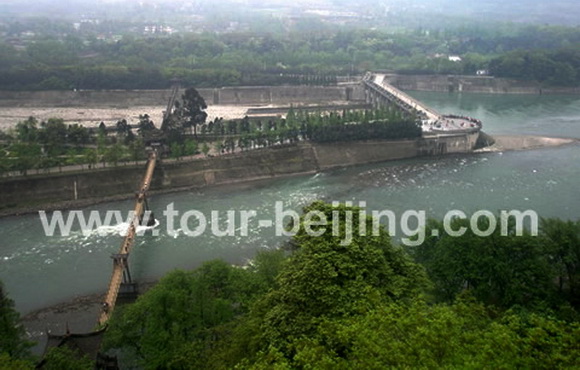
Entrance Fee: 80 yuan
Opening Time: 08:00-17:30 (December – February next year)
08:00-18:00 (March – November )
How to get there: Take subway line 2 to Xipu, and then take intercity train to Dujiangyan from Xipu. The train costs 10 yuan and takes only 20 minutes to get there.
Add: Dujiangyan City, Chengdu, Sichuan, China
No. 03: Qingcheng Mountain
Qingcheng Mountain means “Green City Mt.” because the whole mountain is covered by green trees, like a city. Qingcheng Mountain is famous for its beauty and quietness. Qingcheng Mountain is 15 kilometers away from Dujiangyan and 68 km east of downtown Chengdu.
This Mountain is also one of the birthplaces of the Taoist religion. With over 20 temples and religious sites for Taoism With over 20 temples and religious sites for Taoism, it exudes a strong flavor of Taoist culture and the buildings demonstrate the Sichuan style of architecture.
Check out Qingcheng Mountain Trip for more information.
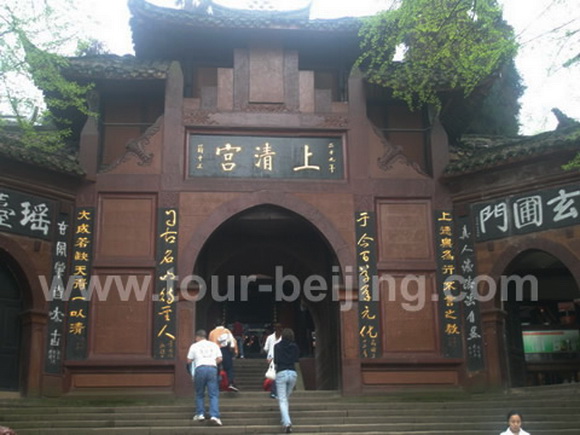
Entrance Fee: CNY80 (the front mountain); CNY 20 (the latter mountain)
Opening Hours: 08:30-17:00 (weekdays); 08:00-18:00 (weekends)
How to get there: From Dujiangyan station ( after visiting Dujiangyan Irrigation System), you can also take the intercity train to Qingcheng Mountain. The ticket price is 5 yuan and the train ride takes 8 minutes. After arriving at Qingcheng Mountain station, there is a bus can direct to the entrance of the scenic area. Qingcheng Mountain Dujiangyan Combo ticket 180 yuan/person.
Add: Dujiangyan City, Sichuan, People’s Republic of China
No. 04: Jinsha Site Museum
Jinsha Site Museum is one of the highlights of your Chengdu Tour. The Jinsha Relics Museum is just about 5 km west of the downtown Chengdu. It is located at No.02, Jinsha Site Road, Chengdu. It is easily accessible by taxi and buses.
Jinsha site is a relic site in the Shang Dynasty (1600–1046 B.C) and Zhou Dynasty (1046–256 B.C.), which has unearthed the most dense cluster of ivory and the most abundant gold and jade ware in the world in the same period.
Among them, the most famous is the gold foil “Sun Bird” on show on the fourth hall, which has been identified as the symbol of Chinese cultural heritage and the main pattern of Chengdu city image logo.
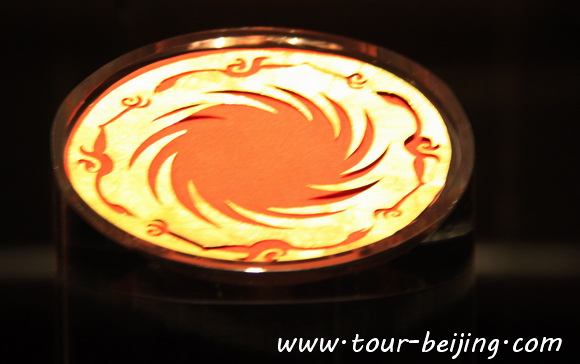
Check my another article How to visit Jinsha Site Museum for more information.
How to get there:
Take Bus no. 5, 79, 82, 83, 84, 100 and get off at Qingyang Avenue North station or Jinsha site east gate station, and then walk about 200 meters to get there; or take Bu no. 7 and get off at the “Jinsha Site intersection” Bus Stop.
Address: 2 Jinsha Yizhi Rd, Jin Sha Shang Quan, Qingyang District, Chengdu
Entrance Fee: 7o yuan
Opening time: 09:00-18:00; Ticketing closed at 17:00
Closed on Monday
No. 05: Wenshu Temple
With a history of more than 1,000 years, Wenshu Temple, or Wenshu Temple is the largest and the best-preserved Buddhist temple in Chengdu. It has been a popular destination for visitors and pilgrims alike for centuries.
There is a tallest iron pagoda in China near the entrance to the Wenshu Temple, the Peace Pagoda of a Thousand Buddhas. There is a long corridor on the west side of the Wenshu Academy, where many inscriptions are stored. A strong sense of history.
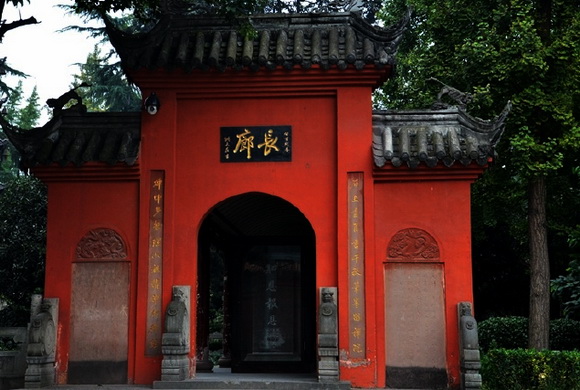
The most outstanding objects in the Wenshu Temple are these over 300 statures of the Buddha, which are made by iron, wood, stone, and clay. The most distinguished one is a jade Buddha brought back from Burma by a Buddhist monk on foot in 1922.
Entrance Fee: free of Charge
Opening Hours: 09:00-17:00
How to get there:
Take Bus No. 42, 75, 126, 127 and get off Da ‘an West Road West Station ; or take bus No. 16, 55, 98 and to get off at Wenshu Yuan Station, walking about 320 meters;
Subway: Take Subway Line 1 to Wen Shu Yuan Station (Wenshu Temple)
Address: 66 Wenshuyuan St, Cao Shi Jie, Qingyang District, Chengdu, Sichuan
No. 06: Du Fu Thatched Cottage
Du Fu, a well-known poet of Tang Dynasty, has a strong influence in the field of Chinese poem. Du Fu Thatched Cottage is the former residence of him.
The cottage consists of six important parts: the Front Gate, the Lobby, the Hall of poem History, the Water Pavilion, the Gongbu Shrine and the Thatched Cottage. There are exhibits that provide details of Du Fu’s life and work. In addition, statues, stone carvings, paintings, and calligraphies by famous writers of different dynasties are also on display.
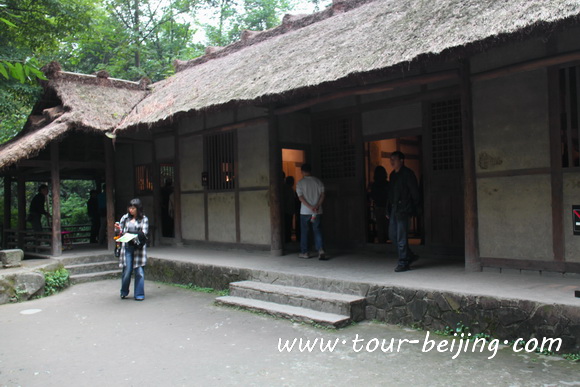
Check out my another article How to visit Du Fu Thatched Cottage for more information.
Entrance Fee: CNY 50
Opening Hours: 08:00-17:30 ( tickets sale closed at 15:00)
How to get there: Take subway Line 4, get off at Caotang North Road and walk there. Take bus no. 1024 and get off at Du Fu Cottage Museum Stop
Address: 37 Qinghua Road, Qingyang District, Chengdu City, Sichuan
No. 07: Kuan Alley and Zhai Alley
Kuan Alley and Zhai Alley literally refer to “Kuan Zhai Xiang Zi” in Chinese meaning “Wide Alleys and Narrow Alleys”. Here they particularly refer to the two famous lanes in Chengdu – Kuan Alley (wide lane) and Zhai Ally ( narrow Lane). Both Kuan Alley ( wide lane ) and Zhai Alley (narrow lane) are the gentrified ancient alleys from Qing Dynasty ( 1644 -1911 ) in Chengdu.
Kuan Zhai Xiang Zi is one of the three historical relic protection areas in Chengdu. This area is actually mainly composed of three lanes – Kuan Lane (Wide Alleys), Zhai Lane ( Narrow Alleys) and Jing Alley ( the old grid pattern streets and courtyards formed by the three parallel alleys).
Kuan Lane ( Kuan Xiang Zi ) is home to the most complete old buildings in the whole block, where you can enjoy a bowl of tea, eat authentic Sichuan cuisine and experience the local conditions and customs of old Chengdu.
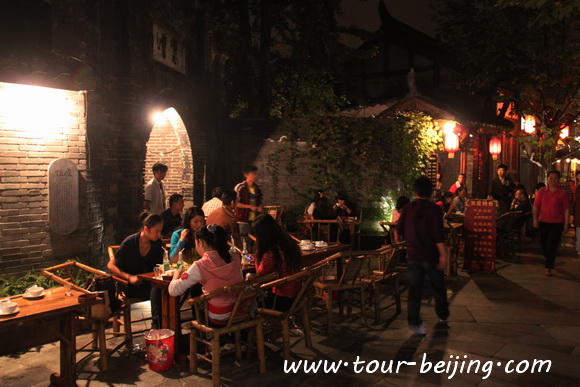
Zhai Lane (Zhai Xiang Zi) is a leisure life taste area with western-style food culture, art and leisure as its focus, as well as buildings of the late Qing Dynasty and early Republic of China.
Jing Lane (Jing Xiang Zi) is a typical miniature of Chengdu folk customs. In addition to the fascinating brick cultural wall, there are also chengdu special snacks and folk customs.
Check out my another article How to visit Kuan Alley and Zhai Alley for more information.
Entrance Fee: Free
Opening Hours: All day
How to get there: Take subway line 2 and get off at People’s Park station, walk 400 meters to get there; take subway line 4 and get off at Kuan Zhai Xiang Zi Station; Take Bus No 62, 70, 93, 126, 127, 163, 340 and get off at Kuan Zhai Xiang Zi stop.
Address: near the Jinhe Road, Qingyang District, Chengdu City, Sichuan
No. 08: Wuhou Shrine
Wuhou Shrine Chengdu was first built in memory of Zhuge Liang (181 – 234), the prime minister of Shu ( 221 – 263 ) of the Three Kingdoms ( 220 – 280). Zhuge Liang was a famous statesman, military strategist. He was also given the title of Marquis Wuxiang in his lifetime. “Wuhou” literally means “Wuxiang Marquis”.
Now Wuhou Shrine is more than a shine. Instead, it has become a museum, the largest museum in China displaying the relics and introducing the history about the Three Kingdom.
Check out my another article How to visit Wuhou Shrine for more information.
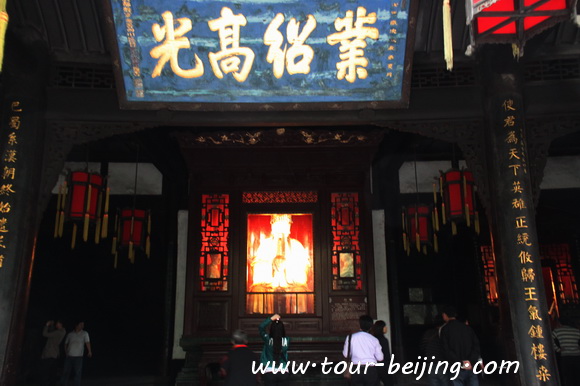
Wuhou Shrine has incorporated the Liu Bei’s Tomb and Liu Bei Temple into one huge museum. In addition, Wuhou Shrine also includes the Sanyi Temple and 50 statues of the heroes in Shu Kingdom.
Entrance Fee: RM50
Opening Hours: 08:00-17:30
How to get there: Take Bus No. 1, 57, 82, 334, 335 and get off at Wuhouci Station or take Bus No. 8, 21 and get off at Wuhouci East Street Station
Address: 231 Wuhouci Street, Wuhou District, Chengdu City, Sichuan
No. 09: Jinli Old Street
Jinli Old Street is located to the east of the Wuhou Memorial Temple of Chengdu. As recode, the street was built originally as early as Shu Kingdom and is called “The First Street of the Shu Kingdom”.
Listed in “the ten commercial pedestrian streets of the Nation” in 2005, Jinli Old Street combines the ambience of ancient and modern China. Strolling down the narrow street, you will find yourself surrounded by a charming old world. The wooden steles and the brick-walls exhibit an ancient charm.
There are also a variety of Sichuan characteristic snacks in the street, a variety of teahouses, cafes, bars, and inns.
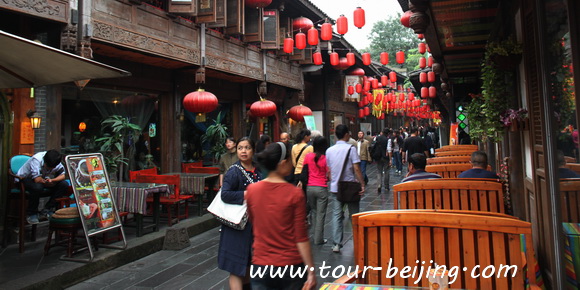
At dusk, Jinli Street will be lit up, quite charming, suitable for taking photos and playing.
Check out my another article How to Visit Jinli Street for more information.
Entrance Fee: free
Opening Hours: the whole day
How to get there: Take No. 1, 57, 82, 334 and 335 and get off at Wuhouci Station, or take Bus no.8 and no.21 and get off at Wuhouci East Street Station.
Address: 231-1 Wuhouci Street, Wuhou District, Chengdu
No.10: Chengdu People’s Park
Chengdu People’s Park is a city center park with a comprehensive garden integrating cultural relics and entertainment. The park is composed of natural landscapes such as Jinshui Creek and bonsai Garden, with various vegetation planted along the banks.
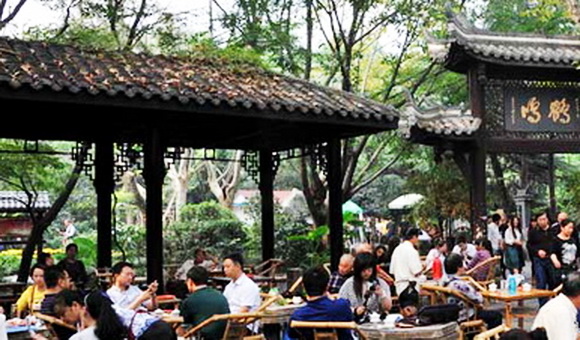
People’s Park is the most popular park in Chengdu. Local people hang out in the park for driking tea and leisure acitivities. People’s Park provides tourists an opportunity to have a glimpse of the leisure city of Chengdu. It is a great public outlet for joggers, tai qi enthusiasts, gamers, musicians, tea drinkers and grandparents with their grandchildren in tow.
Entrance Fee: Free
Note: 12 RMB during the flower show; RMB 8 during major events
How to get there: Take subway Line 2 and get off at People’s Park Station or take bus No. 4, 5, 13, 14, 29, 30, 43, 47, 53, 57, 64, 78, 81, 93, 94, 98, 340, etc.
Address: 8 Xiaonan Street, Qingyang District, Chengdu
Hassle-free Chengdu Guided Tours
If you don’t want to go the do-it-yourself route and prefer the hassle-free escorted tours, here are some options for Chengdu and Sichuan guided tours:
Chengdu tour
Chengdu Car Rental with Driver
Create My Chengdu Trip
Jiuzhaigou Tour
Sichuan Tour
Further Readings
Top 10 Attractions in Chengdu
Best Time to Visit Chengdu
Chengdu Airport
Railway stations in Chengdu
Chengdu Taxi
Chengdu Research Base of Giant Panda Breeding
How to visit Wuhou Shrine
How to visit Du Fu Thatched Cottage
How to visit Jinsha Site Museum
How to Visit Tomb of Wangjian
How to Visit Wangjiang Tower Park
How to Visit Qingyang Taoist Temple
How to Visit Jinli Street
How to visit Kuan Alley and Zhai Alley
How to visit Qintai Road, Qintai Street Chengdu
How to visit Shaoling Road Bar Street
How to Visit Jiuyanqiao Bar Street
The Old Teahouse in Pengzhen Town, Chengdu
Drive from Hanzhong to Ya’an
Ya’an Night View
Most Beautiful Sky Road in China
Moxi Old Town ( Tips, Photos & Map)
Hailuogou Glacier Camp No.04 (Tips,Photos & Map)
Hailuogou Glacier Camp No.03 (Tips, Photos & Map)
Kangding (Tips, Photos & Map)
Drive from Kangding to Xinduqiao
Drive from Xinduqiao to Danba
Jiarong Tibetan Blockhouses
Jiarong Tibetan Ancient Watchtowers
Drive from Xinduqiao to Yajiang
Drive from Yajiang to Litang
Drive from Litang to Daocheng
Drive from Litang to Batang
Drive from Batang to Mangkang
Drive from Mangkang to Deqin
Kawagarbo Viewed from Feilaisi
Drive from Deqin to Shangri-la (Zhongdian)
Ganden Sumtseling Monastery Dwells Your Soul
Pudacuo is an earthly paradise
Drive from Shangri-la to Daocheng
Drive from Daocheng to Yading
Yading Brings You Inner Peace
Bipenggou is a fairyland in Autumn
Best time to visit Jiuzhaigou
Best Places to Visit Autumn Leaves in Sichuan
Top 10 Places to Visit in Sichuan
Ruoergai Grassland, my first trip to Ruoergai Grassland
Any questions, just drop a line.






I like the tour, but I understood that the Wolong National Nature Reserve is closed until 2012. Is this true?
If not, is it open now and the Pandas have been brought back from there temporary homes?
And if it is not open, do you substitute a different stop? Thanks.
Hello Sharon,
You may visit Chengdu Panda Base, 10km north of Chengdu downtown.
http://www.tour-beijing.com/travel_blog/chengdu_trip_080408.php